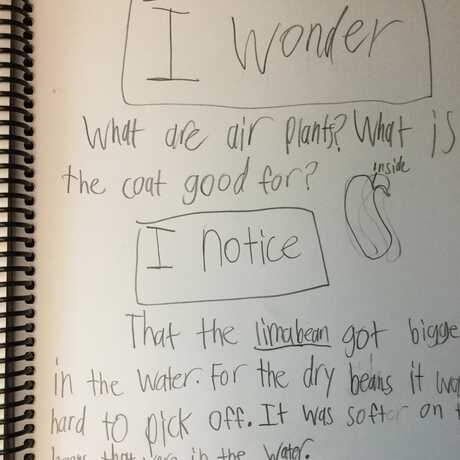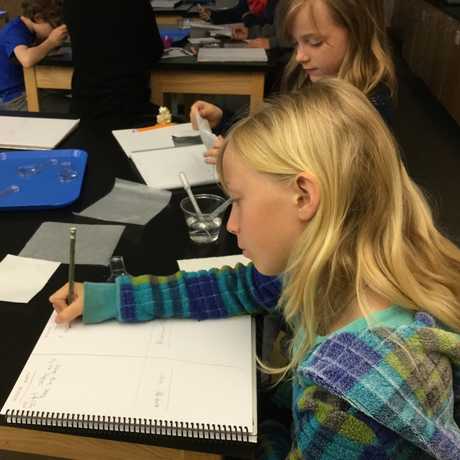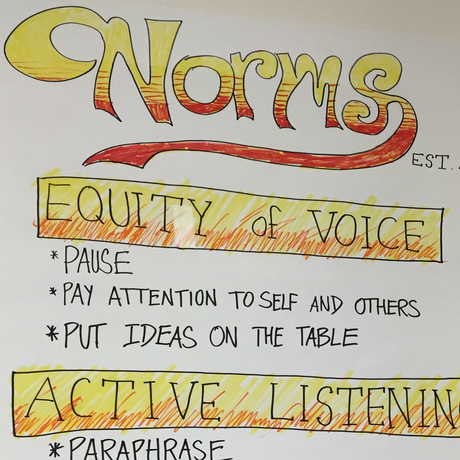Diane wanted to help her quieter students speak during small group discussions. Her lesson focused on the question: "What happens when water falls on different surfaces?"
First, she gave students a chance to quietly observe the four surfaces they would be testing – tinfoil, wax paper, paper towel, and notebook paper. They recorded their observations in their notebooks under two columns: "I notice" and "I predict."
Then, she introduced Conversation Chips. She told the students to each take 3 chips. They could share with their small groups: what did you notice about the 4 materials? What do you think will happen when we drop water onto each surface? Each time a student shared, he dropped a chip into the dish in the middle of the table. Diane warned the students: "There may be silence while you’re waiting for someone who has a chip to talk. That’s fine. Just be patient." If students couldn’t think of what to say, they could look down at their notebook for an idea.
After the hands-on experiment, Diane repeated the Conversation Chips strategy. This time, students discussed their conclusions about the focus question: "What happens when water falls on different surfaces?" They referred to the data they’d collected during the investigation. The conversations flowed naturally, as students could respond to each other and build on each other’s ideas, cashing in a chip with each contribution.
Diane reflects afterward: "Many of my students who usually get steamrolled had a chance to speak. They liked it. They were able to hold the floor." She’s glad she used Conversation Chips twice in one lesson; students had a chance to get used to the protocol. She plans on using Conversation Chips routinely now, and not just in science!









